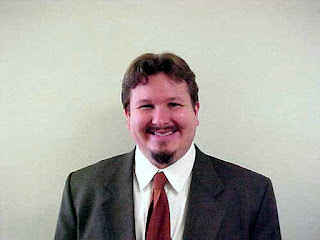Drawing on powerful computational tools and a state-of-the-art scanning transmission electron microscope, a team of University of Wisconsin-Madison and Iowa State University materials science and engineering researchers has discovered a new nanometer-scale atomic structure in solid metallic materials known as metallic glasses.
Published May 11 in the journal Physical Review Letters, the findings fill a gap in researchers' understanding of this atomic structure. This understanding ultimately could help manufacturers fine-tune such properties of metallic glasses as ductility, the ability to change shape under force without breaking, and formability, the ability to form a glass without crystalizing.
Glasses include all solid materials that have a non-crystalline atomic structure: They lack a regular geometric arrangement of atoms over long distances. "The fundamental nature of a glass structure is that the organization of the atoms is disordered-jumbled up like differently sized marbles in a jar, rather than eggs in an egg carton," says Paul Voyles, a UW-Madison associate professor of materials science and engineering and principal investigator on the research.
Measuring the atomic structure of glass at this scale has been extremely difficult. Researchers know that, at a few tenths of a nanometer, atoms in metallic glasses have the same distances between them as they do in crystals. They also know that at long distances-hundreds of nanometers-there's no order left. "But what happens in between, at this 'magic' length of one to three nanometers, is very hard to measure experimentally and is essentially unexplored in experiments and simulations," says Voyles.
An expert in electron microscopy, Voyles used a powerful, state-of-the-art scanning transmission electron microscope at UW-Madison as his window into this nanometer-scale atomic structure. The microscope can generate an electron probe beam two nanometers in diameter-the ideal size for examining atoms on a length scale of one to three nanometers. "And that, fundamentally, is what makes the experiments work and gives us access to this information that's otherwise very difficult to obtain," he says. "We can match our experimental probe in size right to the size of what we want to measure."
Voyles and his team coupled the experimental data from the microscope with state-of-the-art computational methods to conduct simulations that accurately reflect the experiments. "It's the combination of those two things that gives us this new insight," he says. "We can look at the results and abstract general principles about rotational symmetry and nanoscale clustering."
There were several clues in the properties of some metallic glasses that these competing geometric structures might exist. Those arise from the interrelationships of structure, processing and properties, says Voyles. "If we understand how the structure controls, for example, glass-forming ability or the ability to change shape on bending or pulling, and we understand how different elements participate in these different kinds of structures, that gives us a handle on controlling properties by adjusting the composition or adjusting the rate at which the material was cooled or heated to change the structure in some useful way," he says.
One of the unique characteristics of glasses is their ability to transition continuously from a solid to a liquid state. While other materials, when heated,
are partly melted and partly solid, glasses as a whole become increasingly malleable.
While manufacturers now apply metallic glasses primarily in electrical transformer cores, their special forming capabilities may enable manufacturers to make very small, intricate parts. "Unlike conventional metallic alloys, metallic glasses can be molded like plastic-so they can be pushed or sucked or blown into very complicated shapes without any loss of material or machining," says Voyles.
Those manufacturing methods hold true even at the micro or nanoscale, so it's possible to make, for example, forests of nanowires or the world's smallest geared motor. "Five or 10 years from now, there may be more commercial applications driven by those kinds of things than there are now," he says.
For Voyles and his team, the next step will be to calculate the properties of the most realistic structural models of metallic glass they have developed to learn how those properties relate to the structure.
Other authors on the Physical Review Letters paper include lead author Jinwoo Hwang, Z.H. Melgarejo and Don Stone of UW-Madison, and Y.E. Kalay, I. Kalay and M.J. Kramer of Iowa State University.
The National Science Foundation funded Voyles' research and an NSF grant enabled him and other UW-Madison collaborators to purchase the scanning transmission electron microscope. Installed in 2010, the microscope can be operated remotely and provides UW-Madison researchers a level of instrumentation on par with the world-leading federal laboratories and research universities.
Contact: Paul Voyles voyles@engr.wisc.edu 608-265-6740 University of Wisconsin-Madison















No comments:
Post a Comment